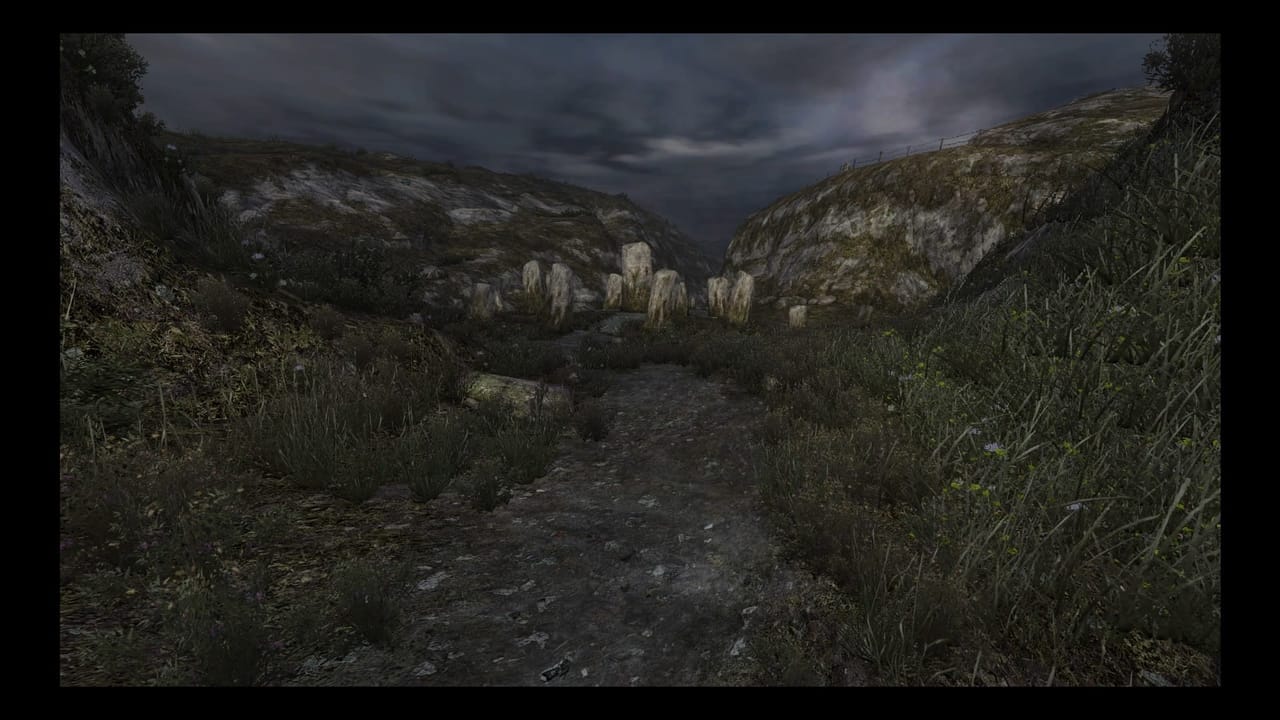Growing up in suburban Oregon, one of my favorite hobbies was hiking around Portland's Forest Park. The best part of those hikes was the sense of exploration I got from venturing so deep into the woods that in the leaves' rustle and birds' chirping, I completely lost the distractions of the nearby sprawling metropolis. I knew the city surrounded me, of course, but it was the feeling that I was somewhere else that was so alluring.
I've craved that sense of exploration in video games as well. My first forays into such classics as Metroid Prime and Ocarina of Time were simply to find out what was out there. For the first few hours of Metroid Prime, I didn't even pay attention to game progression, I was so taken with the world Retro Studios had created. In finishing dungeons like Ocarina of Time's Water Temple, I was a little disappointed as I knew there probably wouldn't be a reason to return. In fact, as I've found bumping into walls with blurry, texture-mapped cities and pastures in Super Mario 64, I'm always disappointed when I realize I've seen all the scenery a game has to offer.
When I first heard of The Chinese Room's Dear Esther, it was described to me as a “walking simulator” and an “art game.” Both descriptions are apropos and not necessarily in a good way. While I loved my youthful walks in Forest Park, I never would've imagined it particularly interesting for someone to watch me take them. However, from the opening shot in Dear Esther to the final scene, watching someone walk around is pretty much all you do. When I say “pretty much,” I don't mean in some hyperbolic, yet metaphoric way; I mean walking and listening to the narrator talk about his dead wife Esther is the entirety of the experience.
I'm getting ahead of myself.

When I fired up Dear Esther, I knew next to nothing about it. I'd heard mention of the title. I'd also heard that it had received critical praise. The specifics of the experience, however, were terra incognita. As I entered the first building only moments after the initial fade in, I didn't know whether I should be expecting a Resident Evil-style jump scare as a zombie leaped out from a corner or a Tomb Raider-style highlighted area communicating to me that there was a nearby bag of holding. What I found were various props (pictures and books), ruined furniture, chemical formulas, and obscure, quoted text. I attempted to read or decipher, or in any way interact with these elements. I found not only that I couldn't, but also that all buttons on my DualShock made my view zoom in. That was it. Not that zoom-ins are a bad mechanic for a game to have, but our culture's visual language suggests that if one can zoom in on an object in a game, there must be some good reason for it. When I found there wasn't, I wondered at the reason The Chinese Room had included the feature.
As I continued along the semi-obvious path and came upon more buildings, chemical formulas, books, candles, and the like, I kept expecting something significant, that I was missing something. I expected thus because in nearly every game I've played, when an environment is established, say a remote British island with one-time, but no current habitation, and then I find visual cues that go against that establishment, namely the chemical formulas and text, I expect some significance to that dissonance. A perfect example of this is in the recent Tomb Raider reboot. The Asian island environment is established, and then you come upon visual cues such as skull piles. Tomb Raider's telling you that something's afoot. About half way through Dear Esther, though, I finally accepted that all the significant-seeming window dressing was that and nothing more. I truly was only walking through this environment. While I grant that a developer can craft a game however they see fit, it says something about their game when a player's exploration, backtracking, and second-guessing amounts to wasted time.

Speaking of the environment, that was by far and away the highlight. The water looked so fluid that I felt I might need a towel sitting next to my chair were I to accidentally fall in. The buildings seemed like they'd been abandoned for decades, perhaps due to the population's flight from some plague or ravenous ghoul. The caves were nothing less than a visual feast. From the stalactites dripping with lonely, echoing tears to the towering waterfalls feeding subterranean lakes, I wanted to lose myself there forever. All these visual delicacies reminded me a lot of the design of The Vanishing of Ethan Carter. Unlike Ethan, however, any hint of something happening in Dear Esther in addition to my never-ending hike was only that: a hint.
The scattered hints weren't just in the random books and formulas. There was also the voiceover narration. The actor's performance perfectly complemented the bleak environment. His voice carried notes of severe loss and sadness. His performance lifted the narration from possible triteness and maudlin sentimentality to quiet contemplation. Given such a strong performance, much of the information delivered in the voiceover felt like it was leading to something (“I crawled in the caves”), but never did. Not only that, but the underdeveloped story of his wife Esther and the circumstances surrounding her death never culminated in a mystery I had to solve, or even a tale I yearned to play out, but rather it strung itself along in a series of monologues to be endured. About a third through the game, the only reason I looked forward to hearing the voiceover was that in triggering it, I felt like I was making some kind of progression.
The Chinese Room didn't pad Dear Esther with completely unnecessary fluff. This fact served as both a positive and a negative. In pursuing any progression, I labored through Dear Esther in its entirety in one two-hour sitting. This may seem insignificant to some, but for me, a gamer who hasn't finished more than half the games in my collection, Dear Esther's length was a both a pleasant surprise and a shock. I appreciated that in its relatively strict linearity, Dear Esther led me pretty straight through from beginning to end. I also appreciated that it didn't contain dozens of pointless side-quests. At the same time, when I play a game that one reasonably assumes to be more than a tech demo, I do expect a minimum of at least a few hours, if for no other reason than it doesn't feel like a full experience otherwise. In fact, when I reached the end of Dear Esther, I honestly wondered if I'd done something wrong. I've finished other games after which I found out there were entire swathes of virtual terrain I'd missed. It wasn't till I saw the end credits that I was finally able to accept that I had, in fact, reached the end.

While I can appreciate the genre of “art game” and the fact that many love the genre, it seems to me that if a developer is going to make an unspoken pact with the player that if the experience they're about to embark on is, in fact, a game, something in addition to rudimentary interactivity should be present. Even in cases such as Depression Quest, there is a driving story and some consequence (although minimal) to the player's actions. In Limbo, even without the benefits of voiceover narration or color, you feel that you've gone through a physical and emotional journey. You could even look back to In Between, where the story and puzzles are so well crafted that they take you on a truly compelling journey through grief. Dear Esther is the video game equivalent of slowly wandering through a museum, without a guidebook, with some random widower popping up behind you and boring you with droning soliloquies about his dead wife.
With its rich visuals, Dear Esther is something to behold. Its island setting with abandoned buildings, cold, craggy hills, and labyrinthine caves perfectly captures the feeling of grieving solitude. Its complete lack of challenge or interactivity definitely makes it easy to pick up. However, the game's weird-for-the-sake-of-weird minimalism and completely underwhelming narrative leave too much to be desired. If plodding, droning portrait-gallery walks are your jam, then Dear Esther may be enough to captivate you for an hour or so.
Dear Esther: Landmark Edition was reviewed on PlayStation 4 with a code provided by the publisher. It is also available on Xbox One and will be a free update to owners of the PC version of the game.
Review Summary
While Dear Esther is visually captivating, it amounts to a little more than a countryside slog in every other aspect.
(Review Policy)Pros
- Beautiful Visuals and Voiceover
- Accessibility
Cons
- Gameplay is Lacking
- Themes Underutilized
Have a tip, or want to point out something we missed? Leave a Comment or e-mail us at tips@techraptor.net











